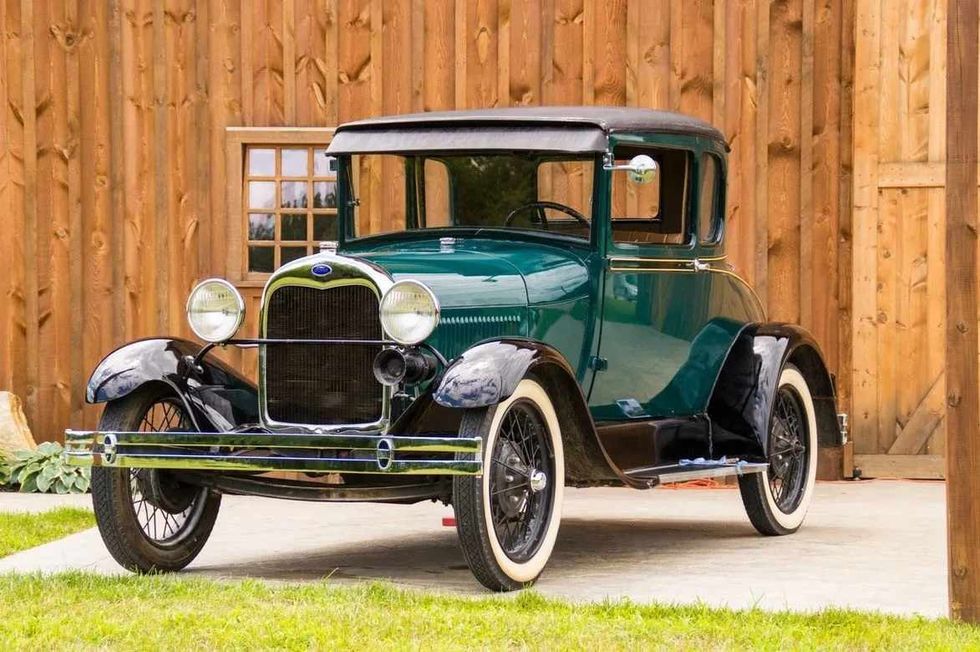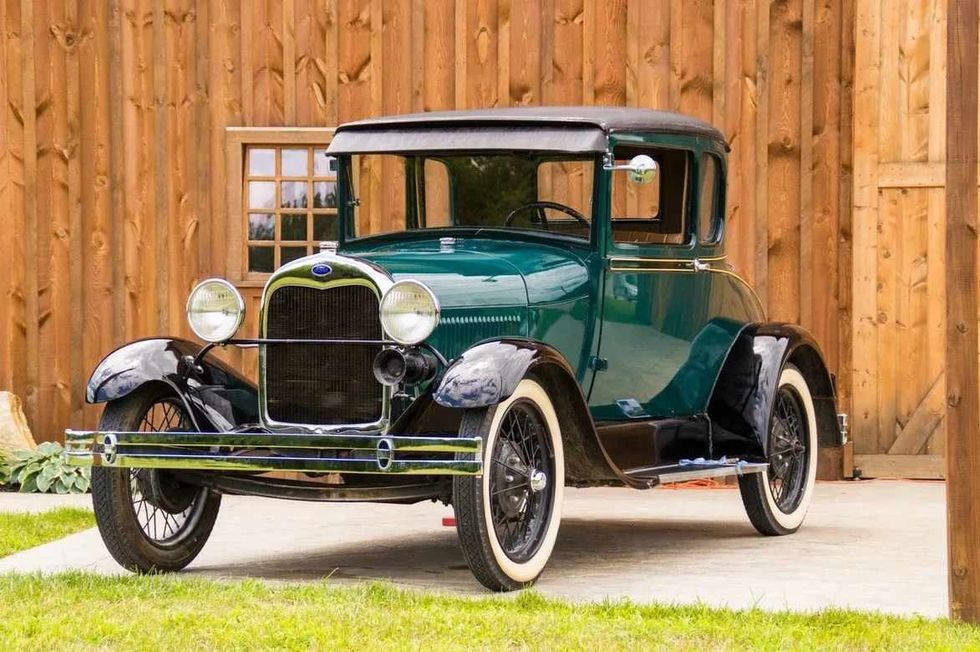In the '70s, the idea of cars running on steam was popular, but some worked while others did not.
So what exactly did the first cars appear to be, and have they changed over the years? The difference is notable, and we invite you to embark on a journey through the history of a car with us as you read the article.
Today, cars come in various fashions, starting from the usual commercial ones to sports cars that can race at raging speeds! Who would have imagined cars coming this far?
With self-driving cars coming into the picture that don't even need drivers, mankind has definitely grown in leaps and bounds to convert a car, a simple four-wheeled vehicle, to make it an ultimate luxury.
You can learn about cars' journey from the 1880s to today in this article. Also, do read our other articles on the history of cooking oil and the history of chocolate for kids here on Kidadl.
Facts About The History Of Cars
The 1770s were the beginning of steam cars, wherein some worked while others didn't. Some of the cars had road wheels, while some had fire pumpers to move them.
By the 1880s, people tried to create daily-use cars that would run on gasoline, electricity, and steam. Daimler, Bens, and Panhard made the most of the European market, while Winton, Duryea, and Haynes captured the American market. Gasoline cars made their way into the world in 1905, and their use seemed easier than steam or electric cars.
By 1910, gasoline cars had captured the market. Read on to find out more about the history of cars.
The 20th-century automotive industry was solely dominated by Americans, although in the late 1800s, it was France and Germany. The Americans were quite adept and manufactured about 2500 motor vehicles!
Seeing the tremendous scope in automobiles, about 485 companies entered this business.
If you think electric vehicles are a 21st-century adaptation, then let us surprise you with this revelation: electric vehicles were, in fact, designed in the early 1800s! Yes, it's taken over a century for these cars to gain recognition, but they have finally achieved their rightful place in the car industry.
George Baldwin Selden invented the internal combustion engine in 1876. In the '70s, Japanese companies like Mazda, Toyota, Nissan, and Honda dominated car production, exporting cheap cars to the west.
One of the first cars that the general public used in America was Ford's Model T. The Ford Motor Company manufactured it in 1908. It is not an understatement to say that the Ford Model T was, back then, the most refined mass production vehicle.
Henry Ford had enticed the public by selling the car cheaply.
The Ford Model T was a four-seater car of the era, quite a luxury at that time. Ford's Model T was an image of simplicity, speed, and practicality.
While Henry Ford introduced the famous Model T in 1908, another car company called General Motors was started by William Durant. Several other manufacturers quickly adopted Ford's mass production regime, except for the European automakers, who, until the '30s, did not adapt to this strategy.
Due to many shortcomings and complexities, steam power technology was used a lot in the 1870s. This technology did not last long.
The Chrysler Imperial was the first production car in 1953 to have the feature of air conditioning in a car. The automobile industry facilitated the First World War as it provided logistical support for various military materials.
The American automobile industry turned its vehicles into military vehicles during World War II. It even manufactured about 75 essential military items that were not at all related to any of the motor vehicle parts.
Automotive technology had many problems during the first decade of the 20th century as advanced designs for cars became increasingly challenging to implement. Karl Bens built the world's first gasoline engine-powered automobile in 1885. It had three wheels and looked akin to a carriage.
He is said to have invented the first car. The Japanese started building fuel-efficient, compact, and small cars in 1973 and 1979. Francois Isaac de Rivaz was the man who designed the first automobile that had an engine powered by internal combustion.
Specifications Of Early Cars
Cars were not always as they seem today. Their appearance, internal and external features, were utterly different a century back. So what exactly were the specifications of early cars? Let's have a look at some of the specifications of the early cars.
Initially, the first cars were deprived of doors, steering wheels, window shields, and turn signals, something which is hard for us to imagine, right? Such design specifications would be found in typical 11950 American automobiles.
Early cars could be attributed to resembling horseless carriages, literally! Their designs were like wooden carriages with very simplistic combustion engines.
In 1996, General Motors launched a feature that used a person's mobile phone to call 911, the emergency system, in the case of an accident. The cars that were a rare possession in 1919 had gained enough popularity by 1930 to make them ubiquitous.
This was the vintage era of the automobile that included many transitions. The '50s again saw a significant change in designs.
The roads built for these cars to operate also started to change as more and more cars came on the road. Unpaved roads were no longer a characteristic of the '50s.
As time progressed, people became comfortable with all cars and their features and started demanding more comfort from these automobiles. Some of their demands incorporated car heating via hot bricks from the double-skinned exhaust through a heater radiator matrix.
The car radio was introduced for entertainment purposes. Another specification was the use of hydraulically actuated brakes and four-wheel braking through a standard foot pedal.
Back then, the way cars worked was a tad bit different from our cars today. The steam cars burned fuel through the water in the boiler, which pushed pistons and turned around the crankshaft.
Gasoline cars ignited the fuel, causing a minor explosion, which spun the crankshaft even more. Electric cars of that era worked on a battery that powered small electric motors to turn the shaft.
Timeline Of Cars Since Invention
Travelling has always been on a human's mind for thousands of years, which is how man developed different ways to travel. The human species has come a long way from the invention of the wheel to integrating it with computers to create smart cars. Let's have a look at the timeline of this progress.
1886: The first car was invented by Karl Benz in the 19th century. This motor car had three wheels and one internal combustion engine.
1908: Ford produced the Model T, the first car with a proper assembly line for its production. This was one of the cheapest and most affordable cars for the public back then.
1911: The concept of starting an engine with a button instead of manual hand cranks was developed. These were called 'electric ignition starters'.
1949: Chrysler invented car keys to get the ignition and electric starter started. This was considered a better way to start cars.
1953: Chrysler added air conditioning as another comfort feature in cars. It had three options to control the intensity: low, medium, and high.
1958: To make driving more convenient on motorways, another feature called cruise control was developed that allowed drivers to maintain a constant speed without using the accelerator.
1971: The anti-lock braking system was a safety addition that automatically helped the wheel lockup to prevent the car from skidding.
1988: Airbags, another popular feature, was created. Initially, it was installed by the US government in the '70s, but Chrystler mandated its use in commercial cars as well.
2000: In order to ease travel, a GPS navigation system was built for commercial cars. Although the early '90s had US military vehicles already equipped with this technology, the 21st century saw the technology being used for daily use as well.
2003: Toyota launched a remarkable feature of automatic parking where intelligent parking assistance helped drivers park parallelly.
2014: Elon Musk pioneered autopilot technology on his car, the Model S. This was the first of a kind of assistance offered commercially to cars to steer or change lanes on a motorway intelligently.
2021: Google ventured into self-driving cars. The name of the car to be developed is Waymo.
Significance Of The Invention Of Cars
Cars have now become an inevitable part of our lives, increasingly. Just like we eat, sleep, and drink, we also travel, and who enables travel the most? It's the cars! Over the years, humans' dependence on them has created a lot of significance for cars in our lives.
Automobile manufacturing has led to better transportation facilities and roads. It has given several people job opportunities and given rise to several supplementary industries like plastics, gasoline, rubber, and petroleum.
The advent of new cars gave many poor people employment opportunities, places to live, and other services too.
Several leisure activities have grown post-invention of cars, and the tourism industry has flourished with the growth of hotels, amusement parks, and restaurants. Cars also gave rise to many new government reforms, such as highway rules, minimum speed requirements, and driver's licenses.
Did you know that William Metzer started the first car dealership in the US in 1898? The cost of the first car was estimated at $1,000! Yes, the hand-stitched leather for the seats and wooden flooring of the cars made the cars very expensive!
Here at Kidadl, we have carefully created lots of interesting family-friendly facts for everyone to enjoy! If you liked our suggestions for 131 facts about the history of cars you should know if you love cars, then why not take a look at history of boats or history of glow sticks.









